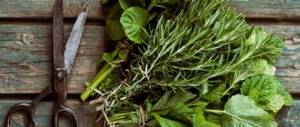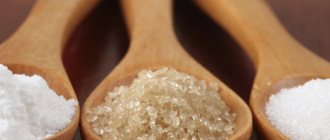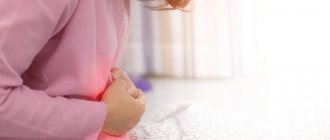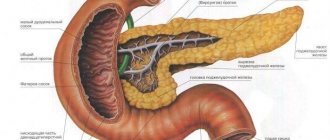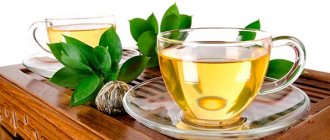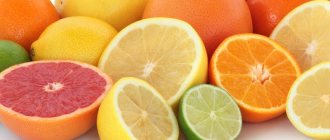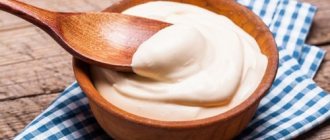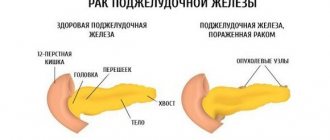Diet for chronic pancreatitis during the rehabilitation period after arrival from the hospital significantly increases the likelihood of healing or stabilization of the patient’s condition. It becomes a fundamental factor in the treatment of this disease.
More often than not, a violation of the basics of diet occurs at home, instead of the necessary strict adherence to the basic principles of therapeutic nutrition. The prescribed diet includes cheap foods that do not require long or difficult preparation. The main rule: food must be finely chopped, grated or ground, prepared by boiling or steaming.
Basic principles of patient nutrition
It is necessary to eat more protein foods and at the same time exclude fatty and carbohydrate foods. First of all, the advice concerns sugar, fried foods containing coarse fiber. If possible, start taking vitamin supplements. You should eat in small portions, at least 5-6 times a day.
General characteristics of the products consumed
The nutrition that is prescribed at the stage of extinction is that the consumption of proteins is increased to the level necessary for the full functioning of the patient’s body. Lipids and carbohydrate substances are presented in the form of all kinds of cereals. Complex sugars, honey, and confectionery products are excluded from the menu, and salt consumption is reduced.
Nutrition for chronic pancreatitis involves the absolute exclusion from the diet of foods that irritate the walls of the esophagus. This includes: alcoholic beverages, acetic, citric acid and other seasonings.
Basics of use and composition of servings
Food is prepared by boiling, stewing, baking, and steaming. It is advisable to eat foods that have been previously ground in a blender or rubbed through a culinary sieve. Nutrition is carried out at equal intervals, every 3-4 hours. Food is offered warm; eating too hot food is unacceptable. The main daily menu items should include: total protein - 120 g, lipid mass - 90 g, carbohydrate substances - 350 g, and have an energy value of no more than 2700 Kcal.
The essence of dietary food consumption
With pancreatitis of the pancreas, at the moment the disease subsides, the number of kilocalories included in the daily amount of food is equal to the daily workload of the body. If you have pancreatitis, you need to eat six times a day, including foods with laxative properties in your diet.
Proteins in diet
Of particular importance is monitoring the daily amount of protein consumed, which is essential for the regeneration of the body. The daily amount of protein consumed is set at least 130 grams, and 70% must be of animal origin.
The diet of a patient suffering from chronic pancreatitis includes beef, veal, rabbit, chicken, and turkey proteins. Prohibited for consumption: lamb, pork, goose, duck and game proteins. If the patient constantly feels pain in the epigastrium, meat dishes must be chopped and boiled or cooked in a double boiler. It is strictly forbidden to eat baked, stewed, fried meat or fish. Take into account the requirement that meat and fish should be lean; it is recommended to use homemade cottage cheese. Following the recommendations helps the patient’s liver function at a normal level and prevents modification of the organ due to pancreatitis.
Due to poor tolerance by patients with inflammation of the pancreas, it is not recommended to use milk as an independent dish. It is better to introduce the product into cereals, soups, and jelly. If a person cannot imagine life without a mug of milk, you need to drink the drink in small sips, half a glass a day.
Kefir and whey have beneficial properties for pancreatitis. Cheese is contraindicated, or in a minimal dose if you feel better.
It is forbidden to consume whole eggs, exclusively in the form of additives and steamed egg white omelettes. Proteins enter the patient’s body with rice cereal, semolina, oatmeal and buckwheat porridge, pasta, stale bread, and crackers. Legumes are prohibited for pancreatitis.
Fats in the diet of a patient with pancreatitis
The dietary regimen prescribed to a patient with inflammation of the pancreas should include 71 g of fats daily, 20% of which are fats of vegetable origin. Eat as a supplement or in addition to other foods.
Oil is added to already cooked food, and it is better not to use vegetable oil. It is unacceptable to use margarines, lard, and other cooking fats in cooking.
Carbohydrates in diet
The maximum amount of carbohydrates consumed per day should not exceed 350 g. Within the specified norm, it is permissible to use: sugar, honey, jam, syrup. Allowed to eat: crackers, semolina, oatmeal, buckwheat, pearl barley, rice porridge, pasta. Patients are allowed to eat potatoes, carrots, beets, pumpkins, zucchini, and squash. Vegetables must be steamed or boiled. It is advisable to subsequently wipe it, mixing it with cereals.
Patients on a diet are not allowed raw fruits. You can eat baked fruits, mashed through a sieve, and prepare compotes and jelly. Dried fruits cooked in the form of compotes are of great benefit for this disease.
Diet for diseases of the pancreas, liver, gallbladder or stomach (recipes)
The pancreas in the human body is responsible for the production of a special substance - insulin, and therefore is an important organ. Thanks to insulin, sugar metabolism in the body is regulated. Failure of this process can lead to a serious disease - diabetes.
A diet for pancreatic disease will help improve its functioning and avoid many risks.
How does the disease manifest?
Pancreatic juice along with bile is sent to the duodenum. It contains special enzymes that play an important role in digestion. They are responsible for the breakdown of proteins, fats and carbohydrates. If you have a disease of the pancreas, as well as the liver, stomach or gall bladder, food will be poorly digested and absorbed.
The action of all organs is strictly interconnected. For example, pancreatitis (inflammation of the pancreas) can occur as a consequence of a disease of another organ of the digestive system, as well as after suffering from syphilis, tuberculosis or atherosclerosis. A proper diet in this case is the main condition for recovery.
With diseases of the pancreas, the following symptoms may be observed:
- bloating and heartburn;
- hiccups and belching;
- vomiting and constipation;
- weakness, pain in the stomach;
- in extreme cases, jaundice and intestinal bleeding.
Exacerbation of the disease occurs when drinking alcohol, as well as overeating after preliminary fasting. Also, the cause of exacerbation can be infectious diseases (sore throat, flu) or mental trauma.
Diet for diseases of the digestive system
During the period of remission, the patient is recommended to eat frequently (about 5 times a day) in small portions. You should exclude foods that lead to constipation; on the contrary, it is better to introduce foods that promote relaxation.
When planning your menu, you should include foods containing vitamins, proteins and carbohydrates. The amount of fat needs to be reduced. Protein can be obtained by eating lean meat, fish or dairy products. Carbohydrates can enter the body with honey, sweet fruits and vegetables, cereals and sugar. If you have liver and gallbladder disease, you should limit your salt intake to 9-10 grams.
The menu for patients suffering from diseases of the stomach or pancreas can be compiled as follows:
| Breakfast | Dinner | Dinner |
| Cheesecakes made from low-fat cottage cheese | Light soups | Omelette |
| Porridge (choice of buckwheat, rice or semolina) with milk and sugar | Boiled chicken or veal | Any porridge (without oil) |
| Boiled fish or meat with mashed potatoes | Various cereals | Vegetable puree and fish |
| Cabbage cutlets | Vegetables | Cottage cheese |
| Doctor's sausage | Fresh fruits and berries | Prunes and raisins |
| Tea with honey | Compote and jelly | Kefir |
You can vary the recipes at your own discretion, but follow your doctor’s recommendations.
It should be remembered that in case of diseases of the gallbladder or pancreas, food should always be fresh and drink should be warm. You should not drink cold drinks and alcohol, as well as fatty and fried foods.
Diet for pancreatitis
If pancreatic diseases are acute, a more restrictive diet is prescribed. Pancreatitis in this case is diagnosed by the patient’s complaints of severe abdominal pain, radiating to the back. There is general weakness, a drop in blood pressure, body temperature may rise, vomiting or heartburn may be present.
https://youtu.be/U_saweKkDTk
Treatment of acute diseases of the liver, stomach and other digestive organs should be carried out under the supervision of a doctor according to the following scheme:
| 1 – 3 day | It is forbidden to eat any food. To maintain the body, only glucose solution is administered. |
| 4 day | A diet that includes as low-calorie foods as possible. |
| 5 - 6 day | You can diversify the menu and increase the calorie content of foods. A diet for pancreatic or liver disease may include up to 200 grams of carbohydrates, 10-15 grams of dairy and vegetable proteins, and fats are excluded for now. |
| Day 7 | Recipes can contain 250 grams of carbohydrates, 15 grams of fat, 60 grams of protein. The calorie content increases gradually, but you should cook without salt. |
Recipes should not include salt, fatty foods, fish or meat broths, foods that cause bloating or increase the secretory function of the stomach. The menu should be designed for meals 7-8 times a day. It is imperative to include foods rich in vitamins B and C in your diet and consume sugars (carbohydrates that are easily soluble in water).
Diseases of the liver and pancreas require drinking a large amount of fluid per day - about 2.5 liters. Preference should be given to a decoction of rose hips, black currants, and cranberry juice. Recipes may contain honey or jam.
The attending physician will draw up a more detailed menu and give specific recommendations. By following them, you can gradually come to remission.
lediveka.ru
Dishes allowed for pancreatitis
The first courses allowed for pancreatitis include:
- soups with the addition of buckwheat, rice, millet, barley;
- soups with vegetable broth;
- porridge with milk;
- broths from lean meat and fish;
- sweet fruit soups.
To the second:
- boiled beef, poultry, fish;
- scrambled eggs as a steam omelet.
The list of cereals includes: all kinds of cereals, pasta, bread, sunflower oil. Dairy products allowed: milk, cottage cheese, kefir, whey, yogurt, butter. Confiture, honey, sugar and sweetener substitutes are allowed in limited quantities. It is allowed to eat baked and pureed berries, fruits, boiled carrots and beets. Allowed drinks include: tea with added milk, juices from fruits and vegetables.
Diet N1 Pevzner
Pevzner's dietary menu is recommended for peptic ulcers of the duodenum and gastritis with increased secretion of gastric juice. The diet, which is quite gentle, is suitable for nutrition for pancreatic disease. Products that can be eaten: milk, cottage cheese, sour cream, cheese, almost all types of vegetables and fruits, cereals, meat and fish with a low fat content.
General dietary recommendations for people with stomach problems:
- During the period of exacerbation and after it (within a month), food should be pureed or finely chopped;
- It is imperative to chew food well, even after an exacerbation; it is better to avoid large pieces;
- Take food at least 5 times a day;
- Avoid snacking;
- Make sure that your diet contains a sufficient amount of vitamins A, B, C; you can take multivitamins;
- Food should be of moderate temperature; you should never eat cold food.
It is not recommended to eat: canned foods, fatty fish, meat, easily digestible carbohydrates, pickles, spicy seasonings, lard, sausages, fatty cheeses.
Sample menu for the day - it is advisable to follow it all week:
- Breakfast: 1 egg, semolina porridge;
- Lunch: dried toast or bread with butter and honey;
- Lunch: milk soup with buckwheat, cottage cheese;
- Afternoon snack: fruit puree;
- Dinner: steamed eggplant cutlets with boiled rice.
What foods should you completely avoid eating?
Fried food options are strictly prohibited.
Forget about using the list of products in your food:
- Alcohol, soda, kvass, instant and ground coffee drinks, cocoa, grape juices.
- Pig meat, bacon, bacon, lard, salmon, salmon, herring.
- Smoked, spicy or fried foods, fast food, fast food.
- Beans, peas, beans, all types of mushrooms, spinach, sorrel, all types of onions.
- Bakery, confectionery products from muffins, puff pastry.
- Confectionery products made from chocolate, creams, canned sweets, frozen desserts.
- Fruits containing a lot of sugars from the fig, grape, banana, date families.
- Chicken eggs in any form, spices and seasonings.
Sample menu for pancreatitis
An example of nutrition during the inflammatory process in the pancreas will be similar options.
Example No. 1
Breakfast: boiled beef, milk oatmeal, tea with milk.
Second breakfast: an omelette made from the whites of two eggs, an apple baked with honey and nuts, and rosehip infusion.
Lunch: soup, beef pate, spaghetti, dried apple compote.
Afternoon snack: cottage cheese casserole and tea.
Dinner: boiled fish, tea.
Example No. 2
Breakfast: mashed potatoes, boiled chicken, tea or jelly.
Second breakfast: cottage cheese and banana soufflé.
Lunch: milk soup, pasta with steam cutlets, jelly.
Afternoon snack: rice milk porridge, dried fruit compote.
Dinner: manna and rosehip drink.
Example No. 3
Breakfast: rice or buckwheat porridge, steam omelette, tea.
Second breakfast: baked apple, compote with biscuits.
Lunch: pureed meat soup, crackers, boiled fish, grated beets.
Afternoon snack: oatmeal with berries, yogurt.
Dinner: boiled fish pate, mashed potatoes, kefir.
Example No. 4
Breakfast: wheat porridge, steam cutlet, fruit drink.
Second breakfast: boiled chicken, vegetable puree, tea.
Lunch: zucchini and pumpkin soup, homemade steamed sausage, mashed potatoes, rose hip or dried fruit drink.
Afternoon snack: steamed cutlets, pasta, low-fat cottage cheese, compote.
Dinner: baked rabbit in sour cream sauce, oatmeal without salt, boiled beets with nuts, jelly.
Remember the dangers of overeating. You need to eat little and often. Subject to the principles of proper nutrition for pancreatitis, the effectiveness of treatment of the disease significantly improves.
The way we look depends on what we eat. And this is not just a proverb, but a fact. After all, skin cells are renewed every 35 days, which means their appearance is affected by the food we consume.
Nutrition rules for diet No. 5
For diseases of the hepatobiliary system, there are general recommendations that will reduce the severity of the inflammatory process:
- remove from the diet foods that increase the secretion of gastric juice. These are vegetables with essential oils (garlic, onion, radish, radish, celery), rich broths, dried and smoked products;
- components that mechanically irritate the gastrointestinal mucosa should be excluded. Such products include vegetables with coarse fiber, meat with veins and tendons, baked goods made from wholemeal flour;
- dishes are prepared in a double boiler or boiled. You can bake only if the disease is in remission; you cannot eat the resulting crust;
- the volume of refractory and poorly broken down fats is reduced, they are replaced with vegetable oils. In case of inflammation of the pancreas and deposition of gallstones, the total amount of fat in the diet should be reduced;
- Foods with a high quantity of purines are removed from the diet. This is young stock meat, liver and other offal, sardines, tuna, herring, sprats, salmon, shrimp, seafood, dried porcini mushrooms, yeast, smoked eel;
- the use of table salt is limited, since it affects the quality of bile (causes its thickening), which slows down its outflow;
- the amount of foods with lipotropic properties in the diet increases (beef, lean fish, cottage cheese, whey, buckwheat, soy flour). Thanks to this, lipolysis in liver cells is normalized and the likelihood of developing fatty hepatosis is reduced;
- meals must be fractional, so that bile and enzymes do not accumulate in the glands, but are released into the duodenum. For pancreatitis, it is recommended to eat every two hours, but in portions of 50–100 grams;
- during the period of relapse, as well as in case of severe inflammation of the liver and pancreas, all products should be ground to speed up their breakdown and reduce the mechanical load on the digestive tract.
What is gastritis?
However, not only the condition of the skin, but also the internal organs depends on nutrition. Very often it is the stomach that suffers, and the most common disease is gastritis.
With gastritis, inflammation of the stomach walls occurs. However, the causes of inflammation itself can be different.
Types of gastritis:
- Spicy. Symptoms of gastritis (pain, nausea, vomiting, bloating, heartburn and belching) appear within hours or days.
- Chronic. The disease is either in the acute stage or in remission.
Recently, the occurrence of gastritis has been associated with Helicobacter pylori, a bacterium that can survive in gastric juice. However, you shouldn’t be too afraid of her.
The fact is that almost every person has it. But she will only start playing against you when you provide her with the proper conditions (for example, poor nutrition).
If you suspect gastritis, you should immediately contact a gastroenterologist. He will prescribe an examination of the gastric mucosa using a fibrogastroscope. This procedure is not very pleasant, but you can survive it.
The main thing is not to eat anything during the day so that your stomach is empty. Otherwise, vomiting will start. During FGDS, if necessary, the doctor will take gastric juice or a small piece of the gastric mucosa for the purpose of laboratory testing.
As you can see, gastritis is a fairly serious disease that is much easier to cure at an early stage. Therefore, do not neglect diagnostics.
Diet No. 2
Table number 2 is recommended for use in diseases such as gastritis with reduced production of gastric juice or complete absence of acidity; it also helps with chronic colitis; it is not suitable for the treatment of pancreatic diseases.
List of foods that can be consumed: eggs, milk, cottage cheese, fermented baked milk and other fermented milk products, low-fat meat and fish, cereals, beans, mushrooms, grated cheese, vegetables and fruits in any form, day-old bread, a small amount of ham with little fat content, milk sausage, sugar, honey, marmalade, cocoa, tea, coffee.
Pancreatitis: causes and symptoms
Continuing to study the organs of the gastrointestinal tract, one cannot help but dwell on the pancreas. Not all people know about this organ.
By the way, the cause of pancreatitis (inflammation of the pancreas) is most often alcohol abuse.
It is a mistake to believe that the greatest impact is on the liver. While the liver has protective enzymes, the pancreas does not. Therefore, it cannot protect itself from toxins.
If we continue to study the causes of pancreatitis, we can highlight poor nutrition. Fried and floury foods force the pancreas to work at full capacity, causing it to produce enzymes. Of course, she will cope with such work, but for the time being. One day this organ may fail.
Symptoms of pancreatitis:
- nausea
- heartburn
- bowel dysfunction
In addition, the pancreas is negatively affected by taking medications, especially hormonal ones. This is why pancreatitis can be diagnosed in both adolescents and young girls.
A malfunction of the pancreas leads to the development of an equally dangerous disease - diabetes mellitus.
Therefore, remember that all internal organs are interconnected with each other, and you need to take care of the condition of the whole organism.
Diet No. 3
The third Pevzner diet is recommended for use in cases of gastrointestinal problems such as constipation associated with relaxation of the intestines (atonic), and is suitable for adjusting nutrition in diseases of the pancreas.
Foods that can be consumed: vegetables, fruits, everything that contains fiber and makes the gastrointestinal tract work, meat and fish with a low percentage of fat, seafood in limited quantities, all types of fermented milk, black bread, dried fruits. It is necessary to introduce a large amount of free liquid into the diet (water, vegetable and fruit juices, rosehip decoction), in this case it will help restore the gastrointestinal tract.
It is necessary to exclude from the diet: jelly, various viscous (especially cereal) soups, fatty, fried foods, canned food, smoked products, pickles, strong tea, coffee, cocoa.
Sample menu for the day:
- Breakfast: 2 baked apples, a glass of milk;
- Lunch: 2 egg omelet;
- Lunch: potato roll with boiled chicken breast, salad of boiled vegetables;
- Afternoon snack: pear and peach puree, a glass of fermented baked milk or kefir;
- Dinner: empty soup in light fish broth with meatballs.
Nutrition for gastritis and pancreatitis
Diet for gastritis
In acute gastritis, you need to abstain from food, but do not forget to drink still water. On the second day, you can include jelly, oatmeal with water and soft-boiled eggs in your diet.
Remember that the diet for gastritis depends on whether you have low or high acid production.
Products that weakly stimulate the production of gastric juice:
- cottage cheese
- boiled meat and fish
- mashed potatoes, cauliflower and carrots
- porridge
- vegetable soups
Foods that strongly stimulate the production of gastric juice:
- carbonated drinks
- coffee
- salty dishes
- egg yolk
- meat broths
- spices
If you have gastritis, you cannot combine protein foods with foods that are rich in carbohydrates. Also remember that it is not easy for a sick stomach to cope with coarse fiber.
Diet for pancreatitis
For pancreatitis, the patient needs to fast for 3 days, and the diet is introduced only from the 4th day. Food should be consumed 5-6 times a day, excluding snacks.
A strict diet must be followed for at least 8 months. Then, having felt relief, you can indulge yourself in forbidden foods, but you must not forget about the basics of proper nutrition.
Pay attention to the method of preparing foods - they should not be fried. The best option is to buy a double boiler in which you can cook vegetables, meat, and fish. Otherwise, boil or bake foods.
Fats (butter and vegetable oil) that have undergone heat treatment cause great harm to the pancreas. Therefore, add them only to ready-made dishes when cold.
As you can see, proper balanced nutrition can prevent many ailments of the gastrointestinal tract.
In the 21st century, in a hurry to do a lot, people forget about health. Snacking on the run, poor-quality food, eating food harmful to the body, stress, bad habits - this is not a complete list, which is among the factors affecting the gastrointestinal tract in particular and the general condition in general.
This happens due to a superficial perception of the state of health. People justify their own inattention by the lack of free time. The justification is not always fair.
The effect of the above factors on the gastrointestinal tract results in a simultaneous exacerbation of gastritis and pancreatitis. Only a properly formulated and selected diet for a specific case for pancreatitis and gastritis will help normalize the digestion process.
Differences in dietary tables for diseases
Diet is an integral part of complex treatment for pathologies of the digestive system. For this purpose, a whole range of dietary tables has been developed for each disease, taking into account the stage and severity of the disease. These diets are still used today. For gastroduodenitis, table No. 1 according to Pevzner is prescribed, for pancreatitis - table No. 5p. At some stages, these recommendations become general, and in case of chronic inflammation of the pancreas, for example, in the stage of stable remission, table No. 5B is used. It resembles in content the diet that is used to treat duodenitis.
A relationship has been established between frequent consumption of certain foods and the development of a specific pathology. If fats and a lot of spices predominate in the diet, this leads to acute pancreatitis. A large amount of fats and carbohydrates with a lack of proteins causes hypoacid gastritis - inflammation of the gastric mucosa with low acid-forming function of the organ. A low amount of protein in the diet is also a risk factor for the development of pancreatitis. Therefore, nutrition is an important component of health.
Severe diseases that the patient has - erosive or ulcerative gastritis, cholecystitis - cause a relapse of pancreatitis with any error in the diet.
Hyperacid gastritis and pancreatitis
The menu and products used for preparing dishes if the patient has gastritis with high acidity in combination with pancreatitis are almost completely identical to the diet for pancreatitis. Particular care must be taken in limiting too sour and fermented foods - fermented milk and fermented products, as well as fruits. When consuming them, heartburn may worsen and your stomach will begin to ache. With increased gastric secretion, it is important to include milk and milk cereals in the diet.
Hypoacid gastritis
The diet for pancreatitis and hypoacid gastritis is more complex, and must be followed by gradually introducing certain foods. In case of inflammation of the stomach and duodenum with low or no acidity, it is necessary to stimulate the secretory function of the mucosa in order to increase acidity. For this purpose, it is permissible to drink coffee, cocoa, and tea. But in such cases, exacerbation of pancreatitis is possible, in which they are contraindicated. Milk and products made from it, as well as milk porridges, are completely excluded: they alkalize and help reduce the already low acidity of gastric juice.
Food must be chopped. Food should not injure the mucous membrane - this is important for both gastritis and pancreatitis.
General tips for organizing nutrition for pancreatitis and gastritis
Advice for illnesses is similar. When considering the anatomical location of the internal organs, it is noticeable that the pancreas is located directly above the stomach. Poor functioning of the pancreas causes inflammation of the stomach, the balance of alkali and acids is disturbed - the result is a deterioration in the functioning of the pancreas.
With such a cycle of processes in the digestive system, we will highlight the main recommendations for exacerbation of gastritis and pancreatitis:
- It is necessary to thoroughly grind food when cooking, and chew thoroughly when consuming.
- When cooking, preference is given to steamed, baked, boiled or stewed dishes. Lovers of dishes with a golden crust should forget about their own weakness for such food and use foil when baking.
- You should eat often, eat small portions about the size of your palm.
- The food consumed is received warm.
- It is better to give up the habit of drinking liquid with food, it is better to drink an hour after the main meal.
- You will need to develop a certain diet and strictly adhere to it, without giving concessions.
- You should not overeat before going to bed; it is better to organize your last meal a couple of hours before rest.
Nowadays it is much easier to lead a healthy lifestyle, eat right, kitchen appliances come to the rescue - a blender and a steamer, it’s just a matter of the desire to eat right.
Diet therapy implies a specific list of permitted and prohibited foods. Limited consumption of certain foods will be beneficial for any disease of the digestive system.
What foods are allowed to be consumed?
Acceptable products for exacerbation of pancreatitis and gastritis:
- Lean meat, such as chicken, rabbit, turkey or veal. For gastritis, it is possible to eat a small piece of beef; for pancreatitis, tough meat is not recommended
- Liquid soups (with meatballs, chicken, buckwheat, vegetable, vermicelli). The diet for exacerbation of gastritis is slightly different; broths are included in the list of recommended foods; for pancreatitis, only light vegetable-based decoctions are allowed to be eaten.
- It is allowed to eat yesterday's bread, preferably from whole grains; it is recommended to dry it slightly or eat it in the form of crackers.
- Low-fat fish varieties.
- Fermented milk products: kefir, cottage cheese, cheese. For gastritis with high acidity, it is better to avoid dairy products.
- Eggs.
- In small doses, a teaspoon each, refined sunflower, pumpkin, and olive oils are acceptable; you can add 30 grams of butter, for example, to porridge.
- Cereals – buckwheat, oatmeal and barley, rice and semolina.
- Pasta in small quantities.
- Fruits - apple, pear, banana, for example, in the form of jelly, compote or jelly; the apple can be baked in the oven.
- Vegetables – pumpkin, zucchini, tomato. In case of pancreatitis, fiber-rich vegetables cannot be eaten; in case of exacerbation of gastritis, vegetables, on the contrary, are recommended for consumption.
- As for sweets, the main allowed product is honey and dry biscuits.
Honey for gastritis, enveloping the walls of the stomach, has a beneficial effect in any form of exacerbation. It has antibacterial, healing, anti-inflammatory and soothing properties. Honey components improve the digestive process and reduce acidity. Honey is a permitted product; you can only consume it one spoon a day on an empty stomach.
What foods are prohibited to eat?
The diet for gastritis and pancreatitis is more than strict; in justification, we note that compliance will show a fruitful result after a short period of time.
Prohibited products:
- fatty fish and meat;
- mushrooms;
- cabbage, sorrel, spinach, radish, radishes, beans;
- corn;
- seeds and nuts;
- sausages, smoked, canned, pickled products;
- spices;
- black bread;
- butter and confectionery products, baked goods;
- alcoholic drinks;
- coffee;
- ice cream;
- milk.
The menu seems to be varied, when eating monotonous food, nutritional deficiencies occur, and there is a deterioration in overall health. There is no need to stop following the diet when the first improvements appear.
After the necessary examinations, the doctor will establish the correct diagnosis and prescribe treatment, including proper nutrition. It is acceptable to eat a product from the permitted list, but you should not choose your own diet.
When preparing a diet, gastroenterologists initially rely on the level of acidity in the stomach. If it is elevated, you should limit the consumption of foods that provoke an increase; if the level is reduced, you should give preference to what will increase acid production.
Diet for stomach pain
When the stomach starts to hurt, it is most often perceived as a temporary inconvenience - take a painkiller tablet, wait, and you can again spoil your health with fast food, strong alcohol and other not very healthy products. However, already at this stage it is worth thinking about the correctness of your diet, so that you do not later have to consult a doctor with severe symptoms and receive a terrible diagnosis that dooms you to follow a diet for months and years.
For severe stomach pain, gastroenterologists recommend avoiding food for 24 hours until the pain subsides or until medical consultation. At this time, you can drink warm water, weak tea without sugar, still mineral water. After 24 hours, the body requires complete, gentle nutrition that can help it cope with the disease. The best assistant for a patient is knowledge of his diagnosis, so only the doctor will specifically indicate what you can eat when your stomach hurts, and what you should definitely avoid.
Diet
The most important part of the diet is adherence to nutritional culture. To do this you need:
1. Set fixed times for meals.
2. Increase meals and reduce single portions. To prevent stomach diseases, three meals a day are needed; in a diet for chronic diseases, four meals a day are used; six months after an exacerbation, five meals a day; after 3 weeks, six meals a day.
3. Separate drinking chilled liquids or food (milk, juice, drinks, water, ice cream) from eating solid food with plenty of protein and crude carbohydrates with a 2-3 hour break. If you have established stomach diseases, it is better to avoid them altogether. During exacerbations, you should not eat food colder than 15 °C.
4. Avoid hot foods or drinks. The maximum permissible temperature, including cooling in the mouth, is 65 °C.
5. Chew food thoroughly and do not swallow it abruptly. In the diet of patients, crushed food is used, after an exacerbation - grated or even through a sieve.
If you have stomach pain, you can eat:
- porridge, boiled into a semi-liquid state and rubbed through a sieve - semolina, rice, buckwheat, oatmeal. It is better to cook porridge with milk, without adding salt and butter;
- vermicelli, pasta;
- soups – cereal, slimy, with vegetable broth;
- bread - white, yesterday's bread, dried in the oven, or white dry crackers;
- soft-boiled egg or steamed omelette;
- vegetables boiled and crushed to a puree - potatoes, carrots, beets, pumpkin, zucchini, cauliflower;
- boiled meat and low-fat fish - chopped into cutlets, purees and other dishes;
- rosehip decoction and weak tea.
If you have stomach pain, you should absolutely not eat:
- fatty meat and fish;
- spicy, salty dishes, sauces and seasonings;
- breaded fried foods;
- vegetables with an abundance of coarse fiber - white cabbage, radishes, radishes, onions and so on, especially raw;
- eggs hard-boiled or fried to form a rough, burnt crust;
- all animal fats and margarines, except high quality butter (including ghee);
- smoked products and canned food prepared using smoking or frying, that is, everything except dietary ones;
- undried black bread and baked goods;
- alcohol in any form.
Additional dietary recommendations and prohibitions depend on the symptoms accompanying the disease and diagnosis:
1. Watery diarrhea and pain in the stomach and intestines, gurgling in the stomach, vomiting are signs of food poisoning or bacterial infection.
2. Abdominal pain above the navel, nausea, heartburn, belching, diarrhea - gastritis with high acidity.
3. If the pain is accompanied by constant heaviness in the stomach, putrid belching and bad breath, diarrhea or constipation, this is a sign of gastritis with low acidity.
4. When your stomach hurts severely after eating or in the morning on an empty stomach, is accompanied by vomiting, constipation, or there is blood in the discharge, you should immediately consult a doctor. At best, these are symptoms of hemorrhagic or erosive gastritis, but most likely - gastric or duodenal ulcers.
5. If you feel sick, have severe pain in the pancreas (pain in the area just to the left of the stomach, radiates to the back), diarrhea with obvious remains of undigested food in the stool, there is bitterness and a whitish coating in the mouth - you need to call an ambulance. Pancreatitis during an exacerbation is a fatal disease, which also quickly leads to complications.
How to eat for different diseases?
When your stomach hurts, one of three diets is prescribed:
- For people with damage to the stomach or duodenum of an erosive, mechanical and ulcerative nature, as well as inflammation due to increased and normal acidity.
- Nutrition for patients with low stomach acidity.
- For the treatment of pancreatitis, cholecystitis, liver and gallbladder diseases.
The recommendations given for each of the diets complement the general ones, showing what can and should be eaten to cure or reduce symptoms, and what kind of food will cause an exacerbation of the disease.
1. Diet for high stomach acidity.
Used in the treatment of ulcers, food and bacterial poisoning, gastritis of all types, except anacid and hypoacid, as well as as a gentle nutrition for any mechanical or chemical damage to the gastrointestinal tract. Its purpose is to ensure the absence of mechanical and chemical irritants for the mucous membrane. Recommended to eat:
- milk-based dishes, boiled milk, slightly acidic fermented milk products, cottage cheese, cheese - natural antacids. Except in cases of bacterial poisoning and lactose intolerance (for milk);
- butter, refined vegetable oil (olive oil is best);
- non-sour fruit and vegetable juices, jelly, strong tea, still mineral water;
- sweet fruits without peel;
- boiled liver;
- sturgeon caviar (in reasonable quantities).
Note!
The presence of symptoms such as: 1. bitterness in the mouth, putrid odor; 2. frequent gastrointestinal disorders, alternating constipation with diarrhea; 3. fatigue, general lethargy; indicate intoxication of the body by parasites. Treatment must begin now, since helminths that live in the digestive tract or respiratory system...
According to doctors..."
Excluded from the diet:
- porridges and dishes made from corn, millet, barley and legumes;
- rye and bran bread in any condition;
- pickled, fermented foods and drinks, mushrooms;
- mushroom, meat, fish broths and dishes based on them;
- highly acidic drinks, sour fruits, vegetables, vinegar;
- sparkling water, kvass, coffee without milk, chocolate.
Avoid salt and fatty recommended foods - eggs, sour cream. If you feel sick from excess acid, you can drink mint tea outside the period of exacerbation. If there is a significant loss of electrolytes due to vomiting and diarrhea after food poisoning (without increased acidity), the patient is temporarily not subject to restrictions on pickles, marinades and fermented milk products.
2. Nutrition with low stomach acidity.
Prescribed to correct digestion in patients with anacid or hypoacid gastritis. It is designed to gently stimulate the secretion of the gastric glands in combination with the absence of strong mechanical irritants. Recommended to use:
- all soft fermented milk dishes, kumiss;
- vegetable oils, butter;
- tender meat or fish, fried without breading, stewed, baked;
- low-fat meat and fish broths and dishes based on them;
- ripe soft fruits without rough skin or seeds;
- mashed, baked, boiled vegetables;
- vegetable, fruit, berry juices, coffee, cocoa, tea with lemon, carbonated mineral water (in consultation with your doctor).
You can't eat:
- legumes;
- whole undiluted milk, milk soups;
- raw, ungrated vegetables (except tomatoes);
- sweets that are difficult for the stomach - dates, figs, chocolate.
Limit salt, recommended fats, cereals based on corn and barley, kvass and grapes. After the pain disappears, marinades can be added to the diet to enhance acid formation.
3. For the treatment of pancreatitis and cholecystitis.
A special diet is used that is as gentle as possible on the liver, pancreas and bile ducts. Its peculiarity is a noticeable predominance of the protein component over fat and carbohydrates, with the maximum exclusion of simple carbohydrates. The basis of the diet is lean boiled chopped meat or fish, pureed liquid porridge with milk, otherwise it consists of complete prohibitions. You can eat fermented milk products, whole milk (after checking for allergies), baked apples, unsweetened jelly and compotes.
It is strictly forbidden to eat if you have abdominal pain:
- millet, barley porridge, all cereals in crumbly form, legumes, corn;
- any raw vegetables and fruits, mushrooms;
- meat broths and dishes based on them;
- marinades, fermented products, spices;
- liver, kidneys, brain, heart;
- coffee, cocoa, carbonated drinks;
- all the sweets.
Limit: cucumbers, greens, sweet baked fruits, fats, egg yolks (1 per day), wheat porridge.
For the first 2-3 weeks after an exacerbation of pain, it is necessary to strictly follow the rules of nutrition and food preparation; you can gradually make some concessions - switch from grated food to crushed food, from crackers to slightly dried bread, introduce coarser foods into the diet. After six months to a year (sometimes longer with an ulcer), they switch to a less strict diet, avoiding only eating food that can cause pain.
gastroguru.ru
Sample menu for the week
It is more convenient to create a sample menu for the week, making it easier to track the amount of ingredients consumed and compare the balance.
1 day:
- 1 meal: semolina porridge with water, tea, bread and butter;
- snack: vegetable salad, still water;
- Meal 2: vermicelli soup, baked rabbit meat with vegetable side dish, berry juice;
- Meal 3: cottage cheese casserole, plantain broth;
- before bed: a glass of kefir.
Day 2:
- 1 meal: steam omelette, still mineral water;
- snack: baked apple with honey, compote;
- Meal 2: carrot soup with croutons, chicken pudding, green pea puree, cocoa drink;
- Meal 3: meatballs, pumpkin puree, St. John's wort decoction;
- before bed: a glass of cream.
Day 3:
- 1 meal: cheesecakes, pear compote;
- snack: a glass of kefir with dry cookies;
- Meal 2: squash puree soup, steamed beef zrazy, side dish of pasta, unsweetened tea;
- Meal 3: fish casserole, rosehip broth;
- before bed: a glass of cream.
Day 4:
- 1 meal: 2 soft-boiled eggs, cocoa drink;
- snack: berry jelly with crackers;
- Meal 2: semolina soup, boiled rabbit meat, carrot puree, tea;
- Meal 3: chicken pudding, side dish of buckwheat porridge, fruit drink;
- before bed: a glass of kefir.
Day 5:
- 1 meal: rice porridge with water, tea;
- snack: baked apple with honey;
- Meal 2: chicken puree soup with croutons, steamed fish cutlets, side dish of buckwheat porridge, compote;
- Meal 3: vegetable stew, plantain decoction;
- before bed: a glass of cream.
Day 6:
- 1 meal: cottage cheese, unsweetened tea, bread and butter;
- snack: cottage cheese with sour cream;
- Meal 2: soup with meatballs, boiled fish with a side dish of carrots, cocoa drink;
- Meal 3: baked fish, side dish of pasta, oatmeal jelly;
- before bed: a glass of kefir.
Day 7:
- 1 meal: buckwheat porridge with water, jelly;
- snack: a glass of kefir, crackers;
- Meal 2: creamy rice soup, chicken stew with vegetables, tea;
- Meal 3: baked zucchini, boiled beef, rosehip infusion;
- before bed: a glass of cream.
The menu can be supplemented with products; it is not necessary to strictly follow the proposed diet.
Herbal decoctions for pancreatitis and gastritis
Since ancient times, grandmothers treated their relatives using herbal decoctions. For gastritis and pancreatitis, herbal decoctions excellently relieve inflammation and have healing properties.
It is acceptable to take in decoctions and tea form. You should be careful with ready-made teas sold in pharmacies. For example, chamomile tea contains cinnamon; this seasoning should not be used during inflammatory processes.
There are many recipes for preparing decoctions, but decoctions made with alcohol are extremely contraindicated. When choosing herbs, preference should be given to the following - plantain, rose hips, St. John's wort, yarrow. It is better to use diluted rather than concentrated.
Remember about the body’s intolerance to selected plants; at the first appearance of nausea, heartburn, vomiting, stop taking the decoction.
Enzymes
To normalize the digestive process, you need to follow a diet and help the digestive organs cope with their functions with the help of enzymes. Digestive disorders directly depend on the lack of essential substances. The consequence of enzyme deficiency is pancreatitis and gastritis.
Modern pharmaceutical medications prescribed by a doctor fully compensate for the necessary enzyme deficiency. The list of drugs on the market is wide.
Pancreatin is recognized as a popular medicinal enzyme. It restores the functioning of the pancreas, improving the functioning of the gastrointestinal tract and normalizing the digestive process. An appointment is most often prescribed for errors in nutrition, before an ultrasound or x-ray examination, to normalize metabolism.
Pancreatin is part of well-known drugs - Mezim, Creon, Festal.
Do not self-medicate! If any symptoms appear, it is better to seek medical help; only the doctor will prescribe the medications necessary for a particular case. Even if it seems that the body is getting better, the digestive process is normalizing, but the symptoms do not go away completely - you will need to consult a doctor.
Diet during exacerbation of the disease
Naturally, if the pancreas is malfunctioning, it cannot be cured with diet alone. However, during such an unpleasant disease as pancreatitis, it is very important to prevent the situation from worsening.
In case of acute pancreatitis, it is advisable to visit the hospital, but after medical help you must follow a strict diet.
The diet begins with a three-day fast. During these days, you can drink 1-1.5 liters of warm non-carbonated Borjomi mineral water, strictly 200 ml at a time, and a maximum of 400 ml of rose hip decoction.
After fasting, which should last 3 days, a special diet follows, which should be followed for about a week, containing the norm of protein, a minimum of calories and sharply limiting fats and easily digestible fats.
In addition, foods that contain coarse fiber and help the functioning of the digestive glands are completely removed from the diet.
It is best to boil or stew food; under no circumstances should you fry it. Food should have a liquid or puree consistency. You should eat in small portions.
Why do you need a diet?
The diet for gastritis and pancreatitis is aimed at reducing inflammatory processes, sparing the digestive organs as much as possible, blocking painful attacks and preventing diseases from developing to the chronic stage.
The diet helps normalize the functioning of the gastrointestinal tract, does not allow harmful substances to enter the body, and restores the acid-base balance in the gastric mucosa.
Complications possible if the diet is not followed
Nutrition for gastritis and pancreatitis can normalize digestive processes in a short period of time. If you make mistakes during diet therapy, allowing you to indulge in foods from the prohibited list, gastritis and pancreatitis will go into the chronic stage or even into oncology.
Despite the massive spread of diseases among the population, people rarely monitor their diet, leaving things to chance. From the outside it seems that gastritis and pancreatitis are harmless. Remember, the appearance of symptoms of illness signals that you need to seek medical help and adjust the menu based on recommendations.
It is much easier to lead a healthy lifestyle and eat right than to try to cure advanced diseases.
What causes disturbances in the functioning of the pancreas?
The pancreas takes an active part in the digestion process.
Consequently, if its function is disrupted, digestive problems occur. With pancreatitis, poor nutrition and high stress can cause exacerbation of pain, loss of appetite, nausea and vomiting.
Therefore, people suffering from inflammation of the pancreas need a special diet aimed at reducing gastric secretion during exacerbations of the chronic course of the disease, especially with acute pancreatitis, and at stabilizing the disease and preventing the development of complications in chronic pancreatitis.
